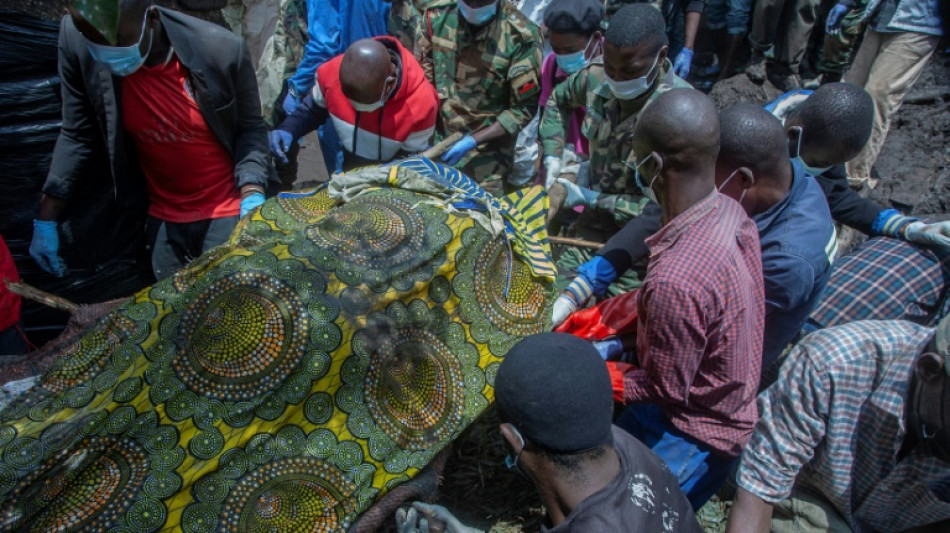
SCS
0.2300


Lacking sniffer dogs and armed just with shovels, rescuers in storm-ravaged Malawi on Thursday went on a grim hunt for buried bodies after Cyclone Freddy struck the southern African country, killing more than 200 people.
As the rains ceased for the first time in five days, rescuers dug up decomposing bodies buried under mud and the debris of homes that had been swept away by the storm.
A joint operation by the military and local inhabitants recovered five bodies in Manje, a township around 15 kilometres (nine miles) south of the commercial capital Blantyre, after locals said they had spotted bubbles forming under the muddy rubble.
In a wrecked house half covered in mud, five soldiers and 10 community members used three shovels to unearth the begrimed corpse of a middle-aged man.
The team created a makeshift stretcher using two logs and a sack, and wrapped his remains in a second sack in the absence of a body bag.
They then began a trek to the foot of the mountain, where an ambulance and military vehicles were waiting.
Along the rocky and muddy path, sombre villagers made way, whispering commiserations and condolences.
"Since yesterday, we noticed that there have been bubbles forming in the mud so we suspected that there were dead bodies down there, and we decided to alert the rescue teams," community member Alfred Mbule told AFP.
"Just this morning alone, our group has recovered three bodies and another group has recovered two bodies. Yesterday afternoon we recovered three bodies."
No-one in the immediate community could identify the corpses, which were in a state of decomposition.
Manje, on the eastern side of Soche Mountain, straddles a mudslide triggered by pounding rain.
"We suspect that these bodies may have come from up the mountain in the mudslide and they just happened to be trapped by these houses that are still standing," said Mbule.
- 'Stench' -
Freddy returned to the African coast at the weekend for the second time in less than three weeks, leaving tears and destruction in its wake.
Travelling 8,000 kilometres (5,000 miles), the cyclone crossed the Indian Ocean before striking Africa in late February.
It then looped back to refuel over the ocean and reversed course to smash into the continent a second time.
Meteorologists say the cyclone is exceptional in its duration and has characteristics consistent with warnings about climate change.
Before dissipating on Wednesday, Freddy set an unofficial record as the world's longest tropical storm, a benchmark set in 1994 for a 31-day storm named John.
Officials have put the total death toll so far at 225, but with such discoveries being made in Manje, the numbers are set to rise.
"We believe there are hundreds more bodies under the mud," Mbule said.
At the foot of the mountain, an excavator dug through the mud as scores of villagers watched.
"The overwhelming stench in the air is a clear sign that the corpses are rotting underneath," said an elderly resident, Rose Phiri, as she watched the machine spade through the rubble.
- 'Miracle' -
Amidst the darkness and despair in Manje, there was one tale of hope.
Patrick Njolomole, a member of the rescue team, told AFP that a 13-year-old girl only identified as Promise had been saved after being trapped in a mud-filled house since Sunday.
"The house was then filled by mud, but the fridge's open doors allowed her just enough space to breath.
"So yesterday, she somehow gained consciousness and started screaming for help. That is when we went to rescue her. She was weak and confused, but alive."
Promise was taken to a hospital before being reunited with her parents at an evacuation centre closeby, he said.
T.Harrison--TFWP